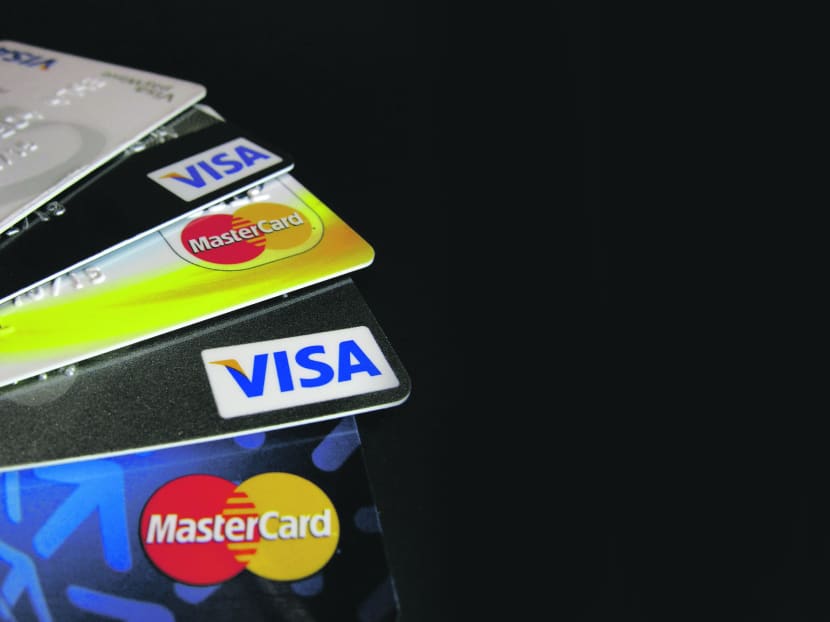Credit card use in S’pore to fall ‘significantly’ by 2020
SINGAPORE — Credit card use in Singapore is set to fall by 24 percentage points in less than five years, according to research from global payments leader Worldpay, as consumers in the Republic become increasingly aware of personal debt and alternative payment methods.

TODAY file photo
SINGAPORE — Credit card use in Singapore is set to fall by 24 percentage points in less than five years, according to research from global payments leader Worldpay, as consumers in the Republic become increasingly aware of personal debt and alternative payment methods.
Credit cards are currently the most popular payment method in Singapore, taking a 60 per cent share of the payments market. But this is set to drop significantly to 36 per cent by 2020, according to the Global Payments Report.
“This growing credit-wariness could be symptomatic of a wider political push to help consumers avoid debt. The Government’s Total Debt Servicing Ratio (TDSR) rules, implemented in 2013, were designed to ensure that monthly debt payments don’t exceed 60 per cent of the debtor’s monthly income. This public focus on the issue of debt helps explain why credit card use is predicted to fall nearly a quarter in less than five years, while debit card use is expected to rise,” said Mr Phil Pomford, general manager Asia Pacific, Global eCom at Worldpay.
Worldpay analysed 30 e-commerce markets around the world, including Singapore, China, India, Hong Kong, Taiwan, South Korea, Malaysia and Australia in Asia.
At the moment, debit cards, cash on delivery and bank transfers each account for 9 per cent of the total payments market in Singapore.
However, according to Worldpay’s research, all of these non-credit payment options will double or nearly double by 2020.
Debit card use is expected to rise by 9 percentage points to cover 18 per cent of the total payments market by 2020, while cash on delivery and bank transfers will represent 18 per cent and 17 per cent of the market, respectively.
E-wallet growth is likely to remain relatively flat, growing 1 percentage point to 10 per cent market share by 2020.
The TDSR framework is a structural measure introduced in 2013 to encourage prudent borrowing by households. Since then, growth in household debt has moderated to 2.8 per cent year-on-year in the third quarter, from an average of 6.9 per cent in the past five years, said the Monetary Authority of Singapore in its annual Financial Stability Review last month.
The unsecured credit situation in Singapore has also improved, with the proportion of revolvers — credit card holders who do not pay up in full — declining to 33 per cent in the third quarter this year, from a peak of 38 per cent in the fourth quarter of 2011, based on data from Credit Bureau Singapore.
Amid the Government’s programme to increase credit awareness and discourage over-borrowing, consumers have become more concerned about rising household debt and now want easier access to non-credit payment options, said Worldpay.
“Our research strongly suggests that Singaporeans will start using a wider range of payment methods in the next five years, possibly influenced by the Government’s work to reduce consumer debt and encourage Singaporeans to think more carefully before they shop on credit. Therefore, online merchants that want to win the hearts and wallets of shoppers in Singapore must offer a range of traditional and alternative payment methods — from debit cards, to cash on delivery and bank transfers — because credit cards alone just aren’t enough,” said Mr Pomford.





